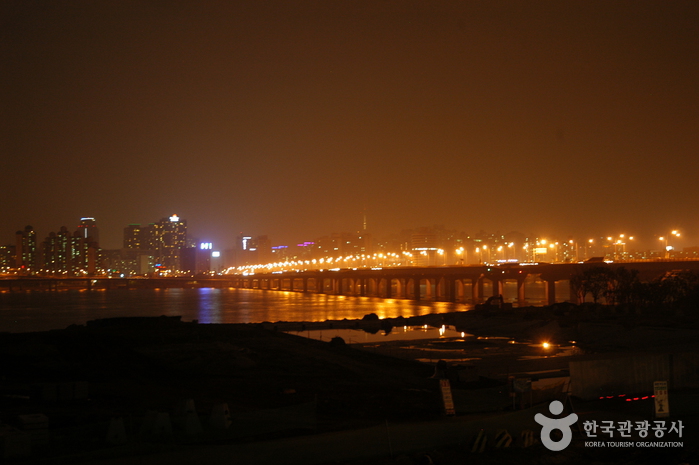Tamiya - Hongdae Branch [Tax Refund Shop] (타미야(홍대점))
5.6Km 2024-04-16
7F YZ PARK, 176, Yanghwa-ro, Mapo-gu, Seoul
-
LEESEL Hanbok (리슬한복)
5.6Km 2025-11-05
136-11, Eoulmadang-ro, Mapo-gu, Seoul
Hanbok, the beauty of Korea
It is a Hanbok brand that produced BTS Jimin's stage costumes and CHUNG HA's Hanbok worn in the 2022 season's greeting pictorial. The ‘Sochangui Maxi Coat’ worn by SHINee's TAEMIN received an explosive response and became more known. LEESEL x SPAO's collaboration pajamas gained great popularity not only among celebrities but also among the general public. In 2022, Hanbok debuted at Milan Fashion Week for the first time. The head office is located in Jeonju.
Wonhalmeoni Bossam Hongik University Station (원할머니보쌈 홍대역)
5.7Km 2024-03-19
10 Yanghwa-ro 18an-gil, Mapo-gu, Seoul
+82-2-338-5356
Wonhalmeoni Bossam is a bossam (kimchi cabbage wraps with pork) specialty restaurant located near Hongik University Station. Bossam is a dish where boiled pork is eaten with kimchi and various leafy vegetables. In winter, they offer a special dish called eorigul bossam (oyster wraps with pork), which is made with pork boiled with seasoned oysters. They also serve jokbal (braised pigs' feet) and yangnyeom jaengban bibim memilmyeon (jumbo spicy buckwheat noodles).
Davich Optical - Mia Sageori Branch [Tax Refund Shop] (다비치안경 미아사거리)
5.7Km 2024-04-22
1F, 3, Wolgye-ro, Gangbuk-gu, Seoul
-
365 Pharmacy - Hongik Univ. Branch [Tax Refund Shop] (365약국 홍대)
5.7Km 2024-04-16
365 Pharmacy, 43, Wausan-ro 27-gil, Mapo-gu, Seoul
-
Troubadour - Hongdae Branch [Tax Refund Shop] (트루바두르 홍대)
5.7Km 2024-04-18
F1, F2 (Donggyo-dong), 137, Eoulmadang-ro, Mapo-gu, Seoul
-
Mapodaegyo Bridge (마포대교 야경)
5.7Km 2021-03-26
Mapo-dong, Mapo-gu, Seoul
+82-2-3153-8365
Mapodaegyo Bridge connects Yonggang-dong, Mapo-gu and Yeouido-dong, Yeongdeungpo-gu. The bridge is 1,400 meters long and 25 meters wide (6-lane road), and was the fourth bridge to be built over the Hangang River, following the construction of Hannam Bridge. The construction of the bridge first started in February of 1968 and was completed in May of 1970. At the time of its completion the bridge was named Seouldaegyo Bridge, but was later changed to Mapodaegyo Bridge in 1984.
Lotte Himart - Mia Branch [Tax Refund Shop] (롯데하이마트 미아점)
5.7Km 2024-04-16
10, Dobong-ro, Gangbuk-gu, Seoul
-
Innisfree - Hongdae Branch (No. 3) [Tax Refund Shop] (이니스프리 홍대3호)
5.7Km 2024-04-17
1F, 12, Yanghwa-ro 18-gil, Mapo-gu, Seoul
-
![Tamiya - Hongdae Branch [Tax Refund Shop] (타미야(홍대점))](http://tong.visitkorea.or.kr/cms/resource/87/2890687_image2_1.jpg)


![365 Pharmacy - Hongik Univ. Branch [Tax Refund Shop] (365약국 홍대)](http://tong.visitkorea.or.kr/cms/resource/01/2888601_image2_1.jpg)
![Troubadour - Hongdae Branch [Tax Refund Shop] (트루바두르 홍대)](http://tong.visitkorea.or.kr/cms/resource/14/2889314_image2_1.jpg)

![Lotte Himart - Mia Branch [Tax Refund Shop] (롯데하이마트 미아점)](http://tong.visitkorea.or.kr/cms/resource/25/2890125_image2_1.jpg)
![Hongik Pharmacy [Tax Refund Shop] (홍익약국)](http://tong.visitkorea.or.kr/cms/resource/48/3312848_image2_1.jpg)
![Innisfree - Hongdae Branch (No. 3) [Tax Refund Shop] (이니스프리 홍대3호)](http://tong.visitkorea.or.kr/cms/resource/26/2888226_image2_1.jpg)
 English
English
 한국어
한국어 日本語
日本語 中文(简体)
中文(简体) Deutsch
Deutsch Français
Français Español
Español Русский
Русский